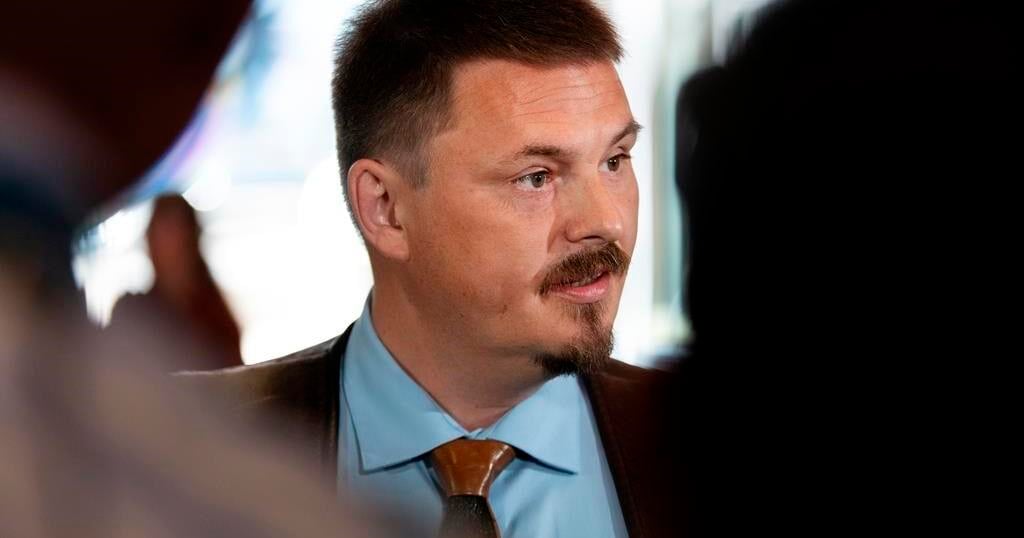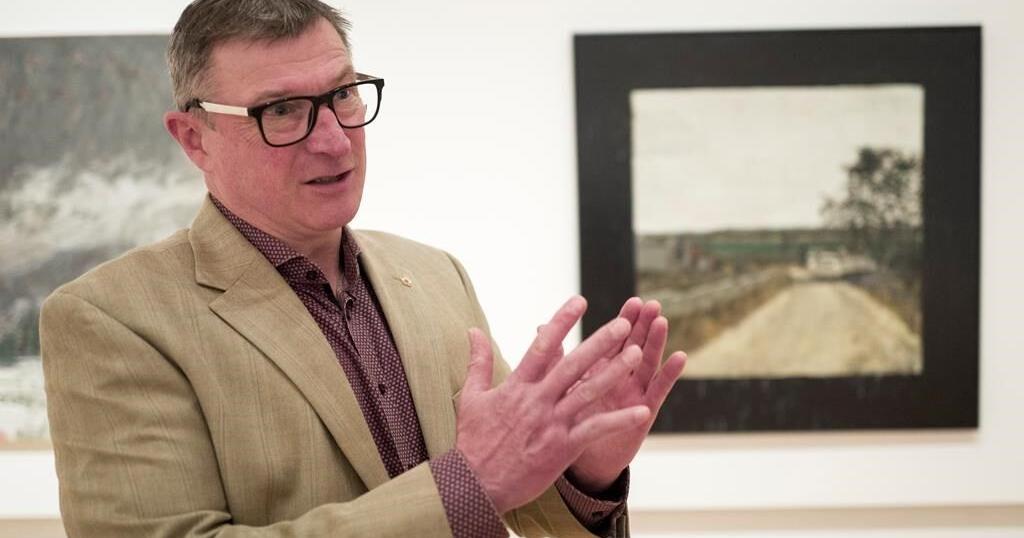CALGARY – There’s a darkness in the work of venerated Canadian war artist Bill MacDonnell, who has spent three decades travelling the world as a self-described silent witness.
MacDonnell’s paintings document the impact of conflict from Bosnia to Afghanistan as well as revisiting atrocities of the past.
He has inspired other artists to follow in his footsteps, and an exhibit of his work is on display at the Military Museums in Calgary through Remembrance Day and into 2025.
“Bill’s very much into the idea of watching, very quietly. You don’t see many people in his works,” said curator Dick Averns, who has met and written about MacDonnell, and was inspired to travel to the Middle East as part of the Canadian Forces War Artists Program.
“A lot of Bill MacDonnell’s work is around the theme of cultural amnesia. They draw attention to histories that are in danger of being forgotten.”
Averns said it was MacDonnell’s example that encouraged him to apply.
“My drive was to have that first-hand experience. My theory in making the art and having a critical eye similar to Bill’s is ‘What are the unseen areas?’ I was interested in relationships between oil, the war in Iraq and 9/11.”
Lt.-Col. Bill Bewick, now retired from Princess Patricia’s Canadian Light Infantry, had taken over as commander of the Loyal Edmonton Regiment when he took MacDonnell to Croatia with the United Nations Protective Force in 1994.
“He’d been over to Europe and various places before, but I think that was his first combat experience,” said Bewick, who took art lessons from MacDonnell years later at what was then called the Alberta College of Art and Design.
“We found a stone building that collapsed with old people and some others incapacitated in it.
“It was a low priority to dig the people out because they were all deceased and we saw that, and the odours associated with that. Those kind of experiences for an artist are pretty intense.”
MacDonnell went back on his own a few months later and visited Sarajevo.
MacDonnell could not be reached for an interview and was unable to attend the opening of his exhibit.
Of the two dozen paintings on display, many depict the aftermath of war with destroyed buildings.
His 1995 painting “Mined Churchyard” show a bombed Serbian church in Bosnia.
“They’re all rather depressing. They’re not happy paintings. There’s no happy paintings,” said Bewick.
“There’s a couple with colour. There’s a nice green grass over there but there’s some other stuff that’s not so happy.”
Averns said the two patches of colour are both of mass graves from eastern Europe and Kyiv when it was part of the former Soviet Union.
In Babi Yar, almost 34,000 Jews were murdered and dumped in a ravine by the Nazis in 1941 as they made their way through Europe.
“They were either shot at the edge of the ravine or they were marched in to lie one on top of the other and shot in the back of the neck,” said Averns.
The mass grave is now a memorial site.
“There was no marker at this site for decades. You can see (on the canvas) here one of the monuments — a ramp with tumbling figures meeting their demise as they went down into the ravine.”
Averns said the second painting shows the mass graves commemorating the German siege of Leningrad, which lasted 900 days and saw 800,000 deaths.
The exhibit is MacDonnell’s first in Western Canada since 2006.
This report by The Canadian Press was first published Nov. 6, 2024.

























